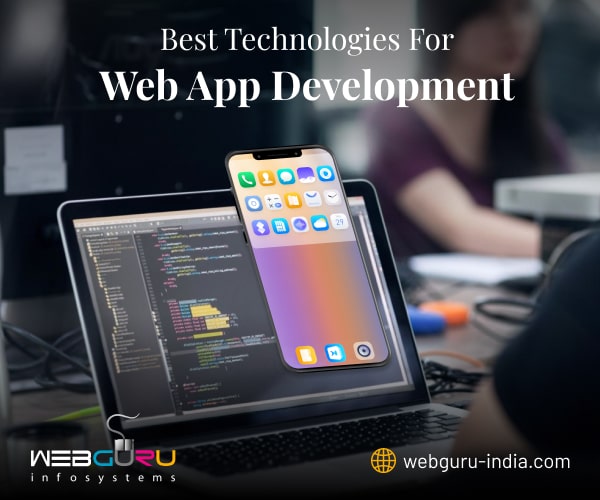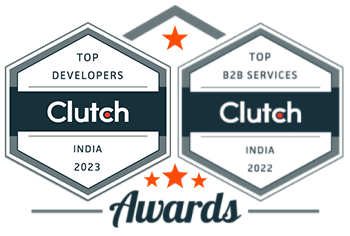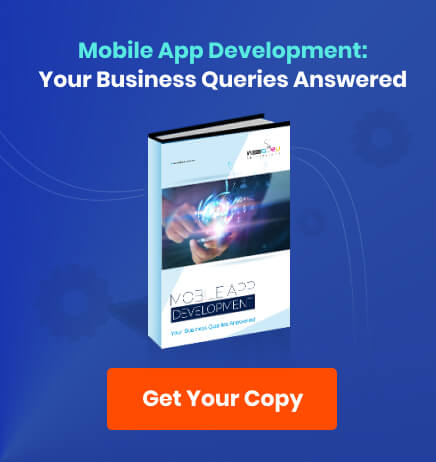Home Blog Web Application Development Best Technologies for Web App Development
Best Technologies for Web App Development
- 18 Nov / 2021
- 2,283 views

The availability of a wide range of technologies has made web app development faster, simpler, and more versatile. However, the only downside is that you need to have adequate knowledge of the latest technologies should you seek to build feature-rich web applications.
No worry, we have made it easier for you. In this blog, we will explore some of the most advanced technologies used by the experts of web application development services.
Advanced Technologies for Web Application Development
Artificial Intelligence
SEMRush predicts that the annual growth rate of AI between 2020 and 2027 is 33.2% and by 2030, it is expected to lead to an estimated $15.7 trillion. Web apps of cross-industry domains, from healthcare to eCommerce, are leveraging artificial intelligence to offer a seamless experience.
Some of the major benefits of AI include human error reduction, helping in repetitive jobs, cost reduction, 24/7 availability, faster processing, customized user experience, tracking efforts, better interaction… and the list continues!
WebAssembly
WebAssembly is a modern-age code that can be run in modern web browsers. This assembly-like language has a compact binary format. It offers a compilation target to the languages like C, C++, C#, Rust, etc., and exhibits a near-native performance.
WebAssembly has brought a revolution in web app development. With it, designers can build rapid web apps that are required especially in games, CAD applications, music, video altering, and more. It enables local execution for web apps.
Blockchain
Innovation is taken to another level with Blockchain technology. This system of recording information makes hacking difficult. In today’s age of cybercrime, Blockchain is widely used for security purposes.
Essentially, Blockchain is a digital ledger of transactions that is distributed across the computer network system. It allows you to determine who can control the system and who cannot. Without permission, it’s inconceivable for anyone to change or control the system.
Headless CMS
Various businesses that used conventional CMS earlier are gradually moving towards Headless CMS. It is a backend content management system where the content repository or “body” is separated from the appearance layer or “head”. A headless CMS executes content delivery via API and ensures a seamless display across several devices.
The rising popularity of headless CMS is integral to the emergence of IoT. Internet of Things facilitates wider connectivity and a headless CMS helps to feature content on different types of devices without any hassle.
This future-proof web development technology ensures an easier, faster, and flexible content delivery. It supports omnichannel architecture and costs less. With the potential to bring a digital revolution in dynamic web design, a scalable headless CMS can soon replace traditional CMS.
Motion UI
Motion UI is a SaaS library that facilitates flexible UI transitions and animation. The stand-alone library can control the transformation effects included in various Foundation components such as Toggler, Orbit, and Reveal.
The nature of Motion UI to offer a remarkable user experience without making a web app bulky makes it a clear winner. Intuitive and interactive components can be integrated into the web app to appeal to the end-users.
Chatbot
Chatbots are widely used in web applications. These power communication with instant responses. As people don’t prefer to lose time, business owners seek to clarify their queries as soon as possible to increase the chances of conversions. And chatbots ensure that.
Here are a few statistics to support the efficacy of chatbots. Chatbots can save businesses about 30% on customer support costs. By 2022, chatbots are predicted to save businesses about $8 billion. From online retail to healthcare, telecommunications to banking – chatbots are employed in various heavy-duty verticals.
Web Worker
Web workers can refer either to the equipment – the physical PC or the product – the PC application that conveys a web app to the end-user. Here, we are pointing to the latter.
The web worker plays as a layer between the operating system and the front layer. Web workers enable web content to run scripts in the background threads. These can perform various tasks without interrupting the user interface. Further, they can execute I/O (Input/Output) using XMLHttpRequest. Two of the most popular web workers in contemporary times are Apache (Linux) and IIS (Microsoft).
AR and VR
These days, business owners prefer to offer an immersive user experience on their web applications. Technologies like Augmented Reality and Virtual Reality greatly help in that. Both of them are bringing a transformation in web development and increasing user engagement.
From 360-degree view to a real-life appearance – AR and VR contribute to it all. These are widely used to merge the gap between the real and virtual.
Conclusion
Web application development has come a long way and these advanced technologies further make them future-ready. Implement these and create a futuristic appeal in your web app. You may also take the help of professional web developers to build a future-ready application. The development cost will vary depending on the technology required and the duration of the engagement. You may refer to this website development price list to get a clearer idea.

Surajit Das
Surajit Das has vast experience in web app development. His expertise in various programming languages & frameworks is reflected in the blogs.
7 comments
Leave a Reply

-
1000+
Happy
Clients -
25+
Countries
Served -
19+
Years of
Trust








Nice post.
Informative post.
Came across this nice post on the best web development technologies. Written in an easy-to-understand language, the concept became clear as I continue to read it further.
Thanks for sharing this blog, it was very helpful and informative.
Thanks for sharing this blog, it was very helpful and informative.
Great article! I completely agree with your list of the best technologies for web app development. These technologies have indeed revolutionized the way we build and deploy web applications.
Keep up the great work! Thank you so much for sharing a great post.